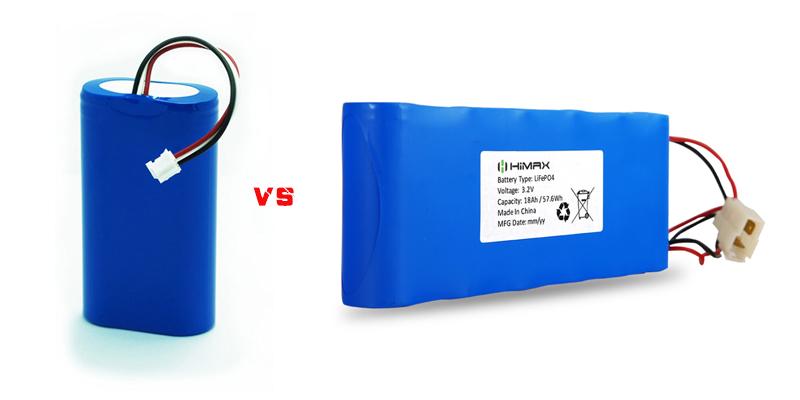Lithium Iron Phosphate Vs Lithium Cobalt Oxide

Lithium Cobalt Oxide batteries and lithium iron phosphate batteries are the most widely used formulas for both LiPo (Lithium Polymer) and Li-Ion (Lithium Ion).
What difference between Lithium Iron Phosphate and Lithium Cobalt Oxide? This video will help you to know that.
The cycle life of Lithium Iron Phosphate batteries are more than 4 to 5 times that of Lithium Cobalt Oxide batteries, and is safer; however, its disadvantage is the lower discharge platform and energy density. The nominal voltage of Lithium Iron Phosphate is 3.2V, the full voltage is 3.65V, but the nominal voltage of Lithium Cobalt Oxide battery is 3.7V, and the full voltage is 4.2V.
The difference between 3.2V and 3.7V may not seem like much, but when we connect cells in series to make a 12V battery pack, only 3 cells are needed for Lithium Cobalt Oxide cells and 4 cells for Lithium Iron Phosphate cells, which makes a difference in cost and weight.
In addition, these two types of batteries are quite different in terms of cycle life, energy density, and safety performance.
The Energy Density
The energy density of Lithium Cobalt Oxide is higher than that of Lithium Iron Phosphate resulting in better Watt-hours Wh/kg and Watt-hours Wh/Liter.
A Lithium Cobalt Oxide battery (LCO) is a type of rechargeable battery, combined with a microporous separator with electrolyte, it mainly relies on the movement of lithium ions between positive electrode and negative electrode. Lithium batteries use an intercalated lithium compound as an electrode material.
A Lithium Iron Phosphate battery (LiFePO4) is a type of LiPo battery that uses Lithium Iron Phosphate as the anode material and a graphite carbon based electrode with a metallic backing as the cathode. It has a wide range of raw material sources, a long cycle life, a high safety index, excellent thermal, chemical stability, and outstanding high temperature resistance.
The Cycle Life
In terms of cycle life, Lithium Cobalt Oxide generally can reach 500 cycles, and the cycle times of Lithium Iron Phosphate are longer. This is a major feature of Lithium Iron Phosphate batteries, which can reach 1500 to 2000 cycles or more. The Lithium Iron Phosphate battery can also reach 100% depth of discharge. Therefore, a good Lithium Iron Phosphate battery can last from 3 to 7 years under regulated use.
The Safety Performance
In terms of safety, Lithium Iron Phosphate batteries are far safer than Lithium Cobalt Oxide batteries.
Lithium Cobalt Oxide batteries have the advantage of high current charging and discharging, and they allow devices to release more energy in a short period of time. Lithium Cobalt Oxide with high discharge rates can achieve continuous discharge rates of up to 50C and pulse discharge rates of up to 150C. They are 40% lighter than a steel-cased lithium-ion battery of the same capacity and 20% lighter than an aluminum-cased battery. These make them more useful for racing applications and power tools, such as RC models and UAVs.
Generally speaking, Lithium Iron Phosphate batteries are not capable of high current discharge, as they are mostly used in energy storage applications, like UPS and solar energy storage systems. But Grepow’s Lithium Iron Phosphate batteries can be discharged at a high rate, with a continuous current of up to 40C, which is suitable for applications such as boat racing, jump starters and powersports.
Shaped Battery
LiPo batteries can be made into a variety of shapes, and are well suited for watches, headphones, rings and other devices that require a high degree of form. However, the voltage and energy density of Lithium Iron Phosphate batteries are lower than those of other Lithium Cobalt Oxide batteries.


